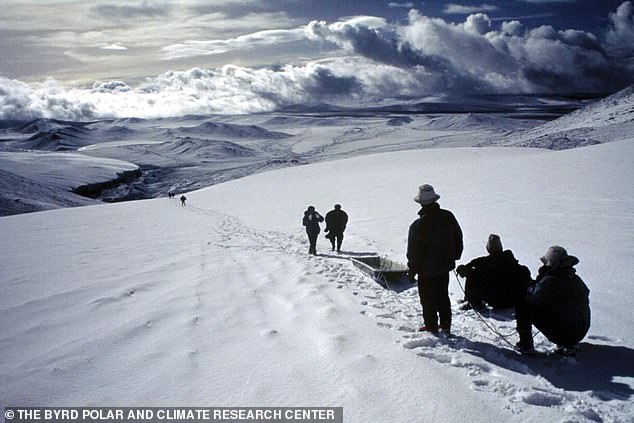More than 1,700 previously unknown viruses discovered in melting ice
Scientists have discovered more than 1,700 ancient viruses deep inside a glacier in western China, most of which have never been seen before.
There are concerns that as the Earth warms and ice melts, pathogens unknown to science could be released that could cause a deadly pandemic.
Researchers found the viruses in a 300-meter-long ice core they took from the Guliya Glacier on the Tibetan Plateau, at the crossroads of Central, South and East Asia.
The viruses have been around for 41,000 years and have survived three major changes from cold to warm climates.
Just one day after the researchers published their study, rapper and actor Chris “Ludacris” Bridges posted a video of himself drinking meltwater from an Alaskan glacier.
Rapper and actor Chris ‘Ludacris’ Bridges faced health concerns after posting a video of himself drinking meltwater from an Alaskan glacier.
The video was viewed millions of times on TikTok and Instagram, leading to concerns that he was endangering his life by drinking untreated glacier water.
But a glaciologist has since declared that “he’s doing absolutely fine” and that water from a glacier stream is “about the cleanest water you’ll ever get.”
However, the public’s concerns are not entirely unfounded.
Elsewhere around the world, deadly pathogens have emerged from melting permafrost, raising fears of a possible outbreak.
In 2016, for example, anthrax spores escaped from an animal carcass that had been frozen in Siberian permafrost for 75 years. Dozens of people were hospitalized and one child died.
Fortunately, none of the 1,700 viruses found in this latest study pose a threat to human health, the researchers said.
That’s because these viruses can only infect archaea – single-celled organisms – and bacteria. They can’t make people, animals or even plants sick.
Still, they are important to study because they provide insight into Earth’s climatic history and can help us understand what future microbial communities might look like.
The research team led by Ohio State University drilled more than 300 meters deep into the Guliya Glacier, a massive ice cap on the northwestern Tibetan Plateau.
The resulting ice core was divided into nine segments, each representing a different time horizon and climate period. The segments ranged in age from 160 to 41,000 years old.
The researchers extracted DNA from each segment and used a process called metagenomic analysis to identify each individual virus strain.

The Guliya Glacier is a huge ice cap on the northwestern Tibetan Plateau. Researchers extracted a 1,000-foot-long ice core from this glacier and analyzed the viruses inside.
Ultimately, they catalogued about 50 times more viral information than scientists have ever collected from glaciers before.
Their analysis showed that the virus communities looked very different depending on the weather conditions at the time they were frozen.
“We saw clear shifts in the viruses that were prevalent in colder climates versus the viruses that were prevalent in warmer climates,” study co-author Matthew Sullivan, a microbiologist at Ohio State University, told Popular Science.
For example, a separate community of viruses emerged 11,500 years ago, while the climate from the cold last ice age to the warmer Holocene, in which we now find ourselves.
“This at least indicates that there is a possible link between viruses and climate change,” said study co-author ZhiPing Zhong, a microbiology researcher at Ohio State University.
Sullivan, Zhong and their colleagues published their findings in the journal Nature Geosciences.
